Spells Are Not Simple.
Spells are not simple.
Here's a real tip for all you baby witches out there, diving into spellwork before anything else: Spells aren't as simple as going through the motions, and a spell probably won't work if you don't understand how to use your Will.
This is what I've been taught by my mentor who has been a witch for 25 years. You have to set your intentions and use your Will to match. What is your Will and how is it different from your Intention? This post may get long, but it's important and I haven't seen any others cover this, so please don't give up half way through!
Basically, it's like this:
Intention: your reason for a spell, your goal/what you want + ingredients to match
Your Will: the Power you put behind your spell or working
The intention part is easy. You figure out your goal, pick a spell or create a spell that uses ingredients or actions that match your intent, and then you perform it. This is what most of Tumblr will teach you how to do. While working with simply your intent can sometimes work, it's more like a coin toss because you're not actually making your spellwork as powerful as it could be.
But your Will, as I've been taught, is the most important part of any magick and is the most often overlooked. You can make magick with nothing but your intent and your Will together. Did you know that? What is your Will? It's the power you put behind your intent. Your Will is your Power.
That's right, baby witches. You have to learn how to tap in to the power around you as well as the power within yourself. This is why spells are never as simple as you think; if you can't add your Will to a spell, it will never be as powerful as you want it to be. This concept can prove difficult, so I'll try to break it down as simply as I can.
Your Will comes from the energy within you, but you can also tap into the energy around you to add to that power. This means that to find your Will you have to first learn how to:
Perceive Energy
Feel Energy
Feel your Own Energy
Touch Energy
Gather Energy Inside and Around You
Manipulate Energy
Infuse Energy with Intent
This is the basis for finding and understanding magick. Magick is all about energy, and the sooner you learn how to do these things, the sooner you'll start to realize your power as a witch. And this is why I say that spells are not as simple as Tumblr makes them; at least, they shouldn't be.
When you're performing a spell, you should be raising energy and infusing that energy with your intent. You could be adding energy to your ingredients, or simply raising it and holding it, to be released into the world when the spell is finished. That's your Will; the energy you add to your working. The stronger the energy, the stronger the spell.
A simple way to put it: Intent + Will = Power
So please do yourself a favor. Research energy. Find it, figure it out, feel it within you. Take your time to truly understand that power so you can properly perform powerful spellwork.
Learning all of this can take time and that is fine. If you take your time to work on this, you will be grateful for it in the long run. Feeling the energy that surrounds you and that comes from within you is such a beautiful thing, I promise. Energy is wonderful.
More Posts from Magickandcoffee and Others



🍄🌲This blog accepts all witches🌲🍄
Because we need to stop tearing each other apart and start sticking together. We already take enough shit, let’s not add to it.
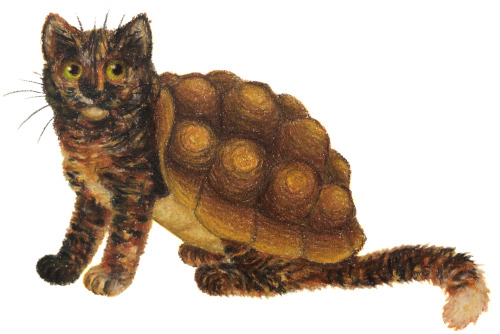
hehe… tortoiseshell cat








Fairuza Balk in The Craft (1996)





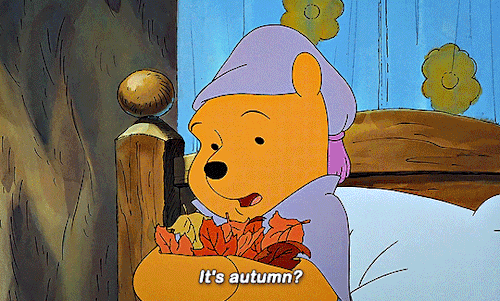
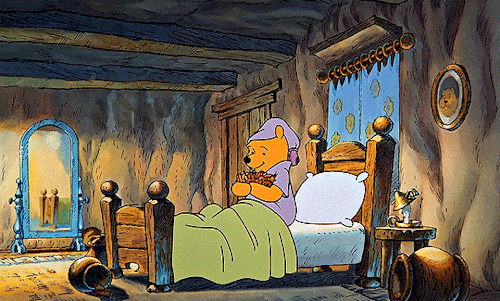

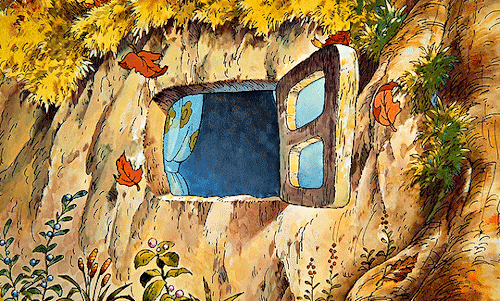

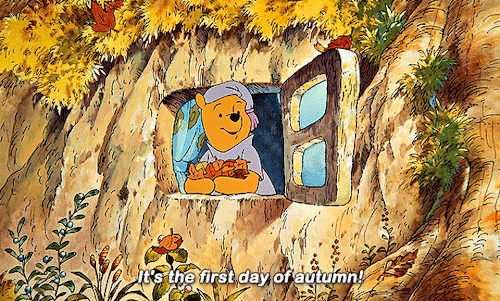
“The time of hot chocolaty mornings and toasty marshmallow evenings.”
Pooh’s Grand Adventure: The Search for Christopher Robin (1997) dir. Karl Geurs




May 2024 witch guide
Full moon: May 23rd
New moon: May 7th
Sabbats: Beltane-May1st
May Flower Moon
Known as: Bright Moon, Budding Moon, Dyad Moon, Egg Laying Moon, Frog Moon, Hare Moon, Leaf Budding Moon, Merry Moon, Moon of the Shedding Ponies, Planting Moon, Sproutkale, Thrimilcmonath & Winnemanoth
Element: Fire
Zodiac: Taurus & Gemini
Nature spirits: Elves & Faeries
Deities: Aphrodite, Artemis, Bast, Cernunnos, Diana, Frigga, Flora, Horned God, Kali, Maia, Pan, Priapus & Venus
Animals: Cat, leopard & lynx
Birds: Dove, Swallow & Swan
Trees: Hawthorne & rowan
Herbs: Cinnamon, dittany of Crete, Elder, mint, mugwort & thyme
Flowers: Foxglove, lily of the valley & rose
Scents: Rose & sandalwood
Stones: Amber, Apache tear, carnelian, emerald, garnet, malachite, rose quartz, ruby, tourmaline & tsavorite
Colors: Brown, green, orange, pink & yellow
Energy: Abundance, creative energy, faerie & spirit contact, fertility, intuition, love, marriage, material gains, money, propagation, prosperity, real-estate dealings, relationships & tenacity
May’s Flower Moon name should be no surprise; flowers spring forth across North America in abundance this month!
• “Flower Moon” has been attributed to Algonquin peoples, as confirmed by Christina Ruddy of The Algonquin Way Cultural Centre in Pikwakanagan, Ontario.
May’s Moon was also referred to as the “Month of Flowers” by Jonathan Carver in his 1798 publication, Travels Through the Interior Parts of North America: 1766, 1767, 1768 (pp. 250-252), as a likely Dakota name. Carver stayed with the Naudowessie (Dakota) over a period of time; his expedition covered the Great Lakes region, including the Wisconsin and Minnesota areas.
Beltane
Known as: Beltaine, May day, Roodmas & Cethsamhain
Season: Spring
Symbols: Eggs, faeries, fire, flowers & maypoles
Colors: Blue, dark yellow, green, light pink, orange, red, white yellow & rainbow spectrum
Oils/Incense: Frankincense, lilac, passion flower, rose, tuberose & vanilla
Animals: Bee, cattle, goat & rabbit
Mythical: Faeries
Stones: Bloodstone, emerald, lapis lazuli, orange carnelian, rose quartz & sapphire
Food: Beltane cakes, cherries, dairy foods, farls, green herbal salads, honey, meade, nuts, oat cakes, oats, strawberries & sweets
Herbs/Plants: Almond, ash tree, birch, bramble, cinquefoil, damiana, frankincense, hawthorn, ivy, meadowsweet, mushroom, rosemary, saffron, satyrion root, St.John's wort & woodruff
Flowers: Angelica, bluebell, daisy, hibiscus, honeysuckle, lilac, marigold, primrose, rose, rose hips & yellow cowslips
Trees: Ash, cedar, elder, fir, hawthorn, juniper, linden, mesquite, oak, pine, poplar, rowan & willow
Goddesses: Aphrodite, Areil, Artemis, Cybele, Danu, Diana, Dôn, Eiru, Elen, Eostre, Fand, Flidais, Flora, Freya, Frigga, Maia, Niwalen, Rhea, Rhiannon, Var, Venus & Xochiquetzal
Gods: Baal, Bacchnalia, Balder, Belanos, Belenus, Beli, Beltene, Cernunnos, Cupid, Faunus, Freyr, Grannus, The Green Man, Lares, Lugh, Manawyddan, Odin, Pan, Puck & Taranis
Issues, Intentions & Powers: Agriculture, creativity, fertility, lust, marriage, the otherworld/Underworld, pleasure, psychic ability, purification, sensuality, sex/uality, visions, warmth & youth
Spellwork: Birth, Earth magick, healing, health & pregnancy
Activities:
• Create a daisy chain or floral decorations
• Decorate & dance around a Maypole
• Set up an outdoor altar & leave offerings to faeries
• Prepare a ritual bath with fresh flowers
• Light a bonfire or candles & dance around them
• Set aside time for self care
• Gather flowers & use them to decorate your home or altar
• Prepare a feast to celebrate with friends/family
• Make flower crowns
• Bake bannocks, oat cakes or cookies
• Hang wreaths decorated with ribbons & flowers
• Plant flowers in your garden
• Start a wish book/box/journal
• Go on a walk & gice thanks to nature⁸
• Cast fertility or a bunch spells
• Fill small baskets of flowers & small goodies, then leave them on your friends/neighbors doorstep as a gesture of goodwill & friendship
Beltane is mentioned in the earliest Irish literature and is associated with important events in Irish mythology. Also known as Cétshamhain ('first of summer'), it marked the beginning of summer & was when cattle were driven out to the summer pastures. Rituals were performed to protect cattle, people & crops, and to encourage growth. (Today, Witches who observe the Wheel of the Year celebrate Beltane as the height of Spring.)
Special bonfires were kindled, whose flames, smoke & ashes were deemed to have protective powers. The people and their cattle would walk around or between bonfires & sometimes leap over the flames or embers. All household fires would be doused & then re-lit from the Beltane bonfire.
These gatherings would be accompanied by a feast, and some of the food and drink would be offered to the aos sí. Doors, windows, byres and livestock would be decorated with yellow May flowers, perhaps because they evoked fire.
In parts of Ireland, people would make a May Bush: typically a thorn bush or branch decorated with flowers, ribbons, bright shells & rushlights. Holy wells were also visited, while Beltane dew was thought to bring beauty & maintain youthfulness.
• The aos sí (often referred to as spirits or fairies) were thought to be especially active at Beltane. Like Samhain, which lies directly opposite from Beltane on the Wheel of the Year, this was seen as a time when the veil between worlds was at its thinnest. At Samhain the veil between the worlds of the living & the dead is thin enough that we can connect & convene with our beloved dead, here at Beltane it’s the veil between the human world, and the world of faeries & nature spirits that has grown thin. Offerings would be left at the ancient faerie forts, the wells and in other sacred places in an effort to appease these nature spirits to ensure a successful growing season.
Some believe this is when The Goddess is now the Mother & the God is seen as the Green Man or the wild stag. It celebrates the symbolic union, mating or marriage of the Goddess & God & heralds in the coming summer months. It represents life rather than Samhain on the opposite side of the Wheel of the Year.
Other Celebrations:
• Rosealia- May 23rd
Rosalia or Rosaria was a festival of roses celebrated on various dates, primarily in May, but scattered through mid-July. The observance is sometimes called a rosatio ("rose-adornment") or the dies rosationis, "day of rose-adornment," & could be celebrated also with violets. As a commemoration of the dead, the rosatio developed from the custom of placing flowers at burial sites. It was among the extensive private religious practices by means of which the Romans cared for their dead, reflecting the value placed on tradition (mos maiorum, "the way of the ancestors"), family lineage & memorials ranging from simple inscriptions to grand public works. Several dates on the Roman calendar were set aside as public holidays or memorial days devoted to the dead.
Roses had funerary significance in Greece, but were particularly associated with death & entombment among the Romans. In Greece, roses appear on funerary steles & in epitaphs most often of girls. Flowers were traditional symbols of rejuvenation, rebirth &memory, with the red & purple of roses & violets felt to evoke the color of blood as a form of propitiation
Sources:
Farmersalmanac .com
Llewellyn's Complete Book of Correspondences by Sandra Kines
Wikipedia
A Witch's Book of Correspondences by Viktorija Briggs
Encyclopedia britannica
Llewellyn 2024 magical almanac Practical magic for everyday living
-
 zibaldoneme reblogged this · 1 month ago
zibaldoneme reblogged this · 1 month ago -
 spiritualscorpion reblogged this · 2 months ago
spiritualscorpion reblogged this · 2 months ago -
 spiritualscorpion reblogged this · 2 months ago
spiritualscorpion reblogged this · 2 months ago -
 archaiclovers liked this · 3 months ago
archaiclovers liked this · 3 months ago -
 almostimpossiblewitchbitch liked this · 3 months ago
almostimpossiblewitchbitch liked this · 3 months ago -
 dramatic-empath reblogged this · 3 months ago
dramatic-empath reblogged this · 3 months ago -
 youshldgotohell liked this · 3 months ago
youshldgotohell liked this · 3 months ago -
 wisteriamoonlight liked this · 3 months ago
wisteriamoonlight liked this · 3 months ago -
 chaos-gremlin-extraordinaire liked this · 3 months ago
chaos-gremlin-extraordinaire liked this · 3 months ago -
 retrograven reblogged this · 3 months ago
retrograven reblogged this · 3 months ago -
 a-sad-guru liked this · 3 months ago
a-sad-guru liked this · 3 months ago -
 theonlinebinder reblogged this · 4 months ago
theonlinebinder reblogged this · 4 months ago -
 qalilitu liked this · 4 months ago
qalilitu liked this · 4 months ago -
 baccararosemary liked this · 4 months ago
baccararosemary liked this · 4 months ago -
 praxling liked this · 4 months ago
praxling liked this · 4 months ago -
 praxling reblogged this · 4 months ago
praxling reblogged this · 4 months ago -
 thisuserislilsilly liked this · 4 months ago
thisuserislilsilly liked this · 4 months ago -
 justeverythingnothingelse reblogged this · 4 months ago
justeverythingnothingelse reblogged this · 4 months ago -
 justeverythingnothingelse liked this · 4 months ago
justeverythingnothingelse liked this · 4 months ago -
 fancydragonunknown liked this · 4 months ago
fancydragonunknown liked this · 4 months ago -
 sethsawyerr liked this · 4 months ago
sethsawyerr liked this · 4 months ago -
 eyeromnia liked this · 5 months ago
eyeromnia liked this · 5 months ago -
 nefarious-virgo liked this · 5 months ago
nefarious-virgo liked this · 5 months ago -
 wolfstar123456789 reblogged this · 5 months ago
wolfstar123456789 reblogged this · 5 months ago -
 princess-maria liked this · 5 months ago
princess-maria liked this · 5 months ago -
 clueless-grunt liked this · 5 months ago
clueless-grunt liked this · 5 months ago -
 lunar-lovewitch reblogged this · 5 months ago
lunar-lovewitch reblogged this · 5 months ago -
 fairyysoup liked this · 5 months ago
fairyysoup liked this · 5 months ago -
 eddiesharks liked this · 5 months ago
eddiesharks liked this · 5 months ago -
 ares-len liked this · 6 months ago
ares-len liked this · 6 months ago -
 pietrororariel liked this · 6 months ago
pietrororariel liked this · 6 months ago -
 choclate-chip-raspberry liked this · 6 months ago
choclate-chip-raspberry liked this · 6 months ago -
 dumbdahl liked this · 7 months ago
dumbdahl liked this · 7 months ago -
 iamdamnation liked this · 8 months ago
iamdamnation liked this · 8 months ago -
 allarounddivinity liked this · 8 months ago
allarounddivinity liked this · 8 months ago -
 xavetycistrunk liked this · 9 months ago
xavetycistrunk liked this · 9 months ago -
 imcatsnyder liked this · 10 months ago
imcatsnyder liked this · 10 months ago -
 onefaceinspace liked this · 10 months ago
onefaceinspace liked this · 10 months ago -
 daddys-little-hippy liked this · 11 months ago
daddys-little-hippy liked this · 11 months ago -
 choppedupsanity liked this · 11 months ago
choppedupsanity liked this · 11 months ago -
 thebabekwena liked this · 1 year ago
thebabekwena liked this · 1 year ago -
 impala-67-zeppelin reblogged this · 1 year ago
impala-67-zeppelin reblogged this · 1 year ago -
 impala-67-zeppelin liked this · 1 year ago
impala-67-zeppelin liked this · 1 year ago -
 zombiesnips-blog reblogged this · 1 year ago
zombiesnips-blog reblogged this · 1 year ago -
 zombiesnips-blog liked this · 1 year ago
zombiesnips-blog liked this · 1 year ago -
 punkmarshmallow liked this · 1 year ago
punkmarshmallow liked this · 1 year ago -
 escapisttxo liked this · 1 year ago
escapisttxo liked this · 1 year ago

𝗉𝗂𝗌𝖼𝖾𝗌 𝗌𝗎𝗇, 𝗌𝖼𝗈𝗋𝗉𝗂𝗈 𝗆𝗈𝗈𝗇, 𝗀𝖾𝗆𝗂𝗇𝗂 𝗋𝗂𝗌𝗂𝗇𝗀𝗀𝗋𝖾𝖾𝗇 𝗐𝗂𝗍𝖼𝗁 | 𝖼𝖺𝗍 𝗆𝗈𝗆 | 𝗉𝗅𝖺𝗇𝗍 𝗅𝗈𝗏𝖾𝗋
300 posts